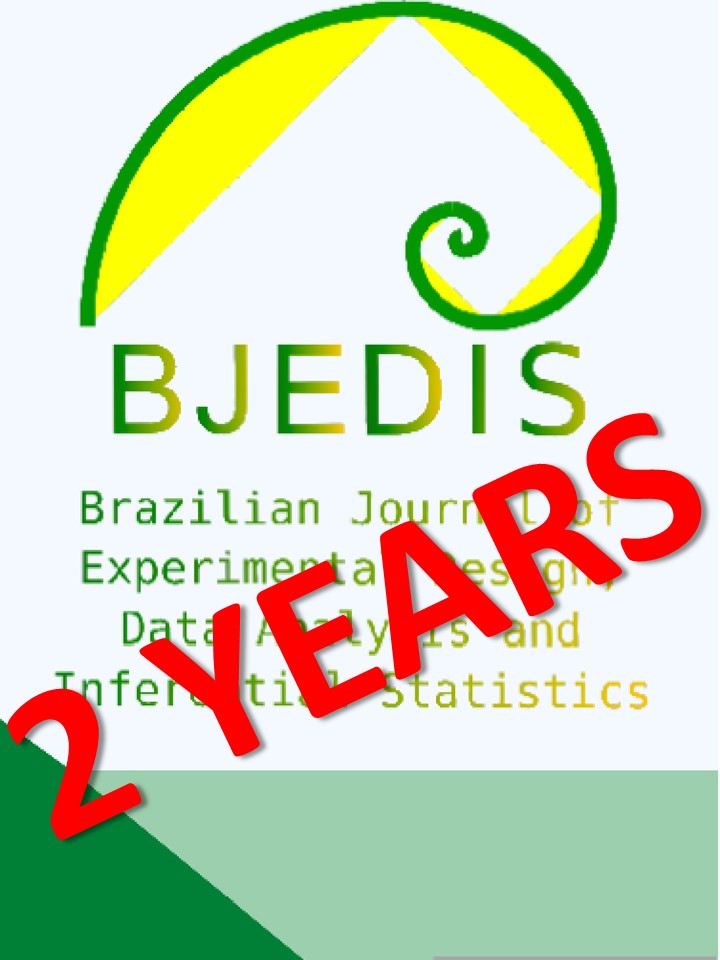APPLICATIONS AND PERSPECTIVES FOR THE USE OF FIBERS VIA MACHINE LEARNING ASSISTED DATA MINING - part II
DOI:
https://doi.org/10.55747/bjedis.v1i1.57220Keywords:
Modification of plant fibers. Machine learning. Nanoscale modification. Data mining. Artificial intelligence.Abstract
The use of vegetable fibers in place of synthetic fibers has been valued due to the wide applicability of these materials in the automotive, textile, packaging and construction industries This is due to the fact that they have properties such as: biodegradation, less abrasive, low density and excellent thermal, mechanical and acoustic properties. Thus, this document discusses the use of plant fibers as additives in polymeric matrices from a prospective analysis, via data mining, specific on the use of nanoparticles as additives in plant fibers and their characterizations and applications in the last 10 years (2011 to 2021) based on 3,000 articles made available in the SCOPUS and SCIENCE DIRECT databases. For this, an artificial intelligence algorithm, based on machine learning, implemented in the Vosviewer software was used. With it, it was observed the advance of the use of fibers of synthetic and vegetable origin, in recent years, focused on the field of health.
References
Assintecal. The green fiber market will grow 14.1% by 2026 and be worth $398 billion. 2019. Available in: https:// www.assintecal.org.br/noticias/1278/mercado-de-fibras-ecologicas-crescera-141-ate-2026-e-valera-us-398-bilhoes. Access: 12 Dec. 2021
Essabir, H.Bensalah, M.O; Rodrigue, D; Bouhfid, R; Qaiss, A. Structural, mechanical and thermal properties of bio-based hybrid composites from waste coir residues: Fibers and shell particles. Mechanics of Materials. [s/l]. v.93, p.134-144, 2016. Disponível em:https://www.sciencedirect.com/science/article/pii/S0167663615002276. Acesso: 25 mar. 2021.
Marinelli, A.L.; Monteiro, M.R; Ambrose, J.D; Branciforti, M.C.; Kobayashi, M; Nobre, A.D. Development of polymeric composites with natural plant fibers of biodiversity: a contribution to Amazonian sustainability. Polymers. v.18, no.2 São Carlos, 2008. Available in: https:// www.scielo.br/scielo.php?script=sci_arttext&pid=S0104-14282008000200005. Access on: 25 Mar. 2021.
Orue, A, Eceiza, A; Arbelaiz. A The effect of sisal fiber surface treatments, plasticizer addition and annealing process on the crystallization and the thermo-mechanical properties of poly(lactic acid) composites. Industrial Crops & Products.[ s/l]. 2018. Disponível em:https://www.sciencedirect.com/science/article/pii/S092666901830298X. Acesso em:25 mar. 2021.
Radovanovic, E; Fernandes, J.R; Moses, M.P.; Girotto, E.M;Favaro, S.L. Silica nanoparticles silanized as compatibleizing in sisal/polyethylene fiber composites. Polymers. [s/l]. v.27, p.61-69, 2017. Access at:https://www.scielo.br/scielo.php?script=sci_arttext&pid=S0104-14282017000700061. Access on: 25 Mar. 2021.
Silva, J.C; Oliveira, G.E; Toledo Filho, R.D; , F.G. Oil Spill Clean-Up Tool Based on Castor Oil and Coffee. Macromolecular Symposia. 2018. Disponível em: https://www.researchgate.net/publication/327063971_Oil_Spill_Clean- Up_Tool_Based_on_Castor_Oil_and_Coffee_Grounds_Magnetic_Resins. Acesso em: 25 mar. 2021.
www.vosviewer.com/documentation/Manual_VOSviewer_1.6.8.pdf. Access on: 25 Mar. 2021.
www.drive.google.com/drive/folders/1lZaKwR9rQbmL6_lPbMwbMInp-ep6rIoK?usp=sharing.
Downloads
Published
Issue
Section
License
Copyright (c) 2023 Brazilian Journal of Experimental Design, Data Analysis and Inferential Statistics

This work is licensed under a Creative Commons Attribution 4.0 International License.
AUTHORS DECLARATIONS AND COPYRIGHT TRANSFER LICENSE
We at this moment declare that the present paper is our original work and has not been previously considered, either in whole or in part, for publication elsewhere. Besides, we warrant the authors will not submit this paper for publication in any other journal. We also guarantee that this article is free of plagiarism and that any accusation of plagiarism will be the authors' sole responsibility. The undersigned transfer all copyrights to the present paper (including without limitation the right to publish the work in any and all forms) to BJEDIS, understanding that neglecting this agreement will submit the violator to undertake the legal actions provided in the Law on Copyright and Neighboring Rights (No. 9610 of February 19, 1998). Also, we, the authors, declare no conflict of interest. Finally, all funders were cited in the acknowledgments section.


